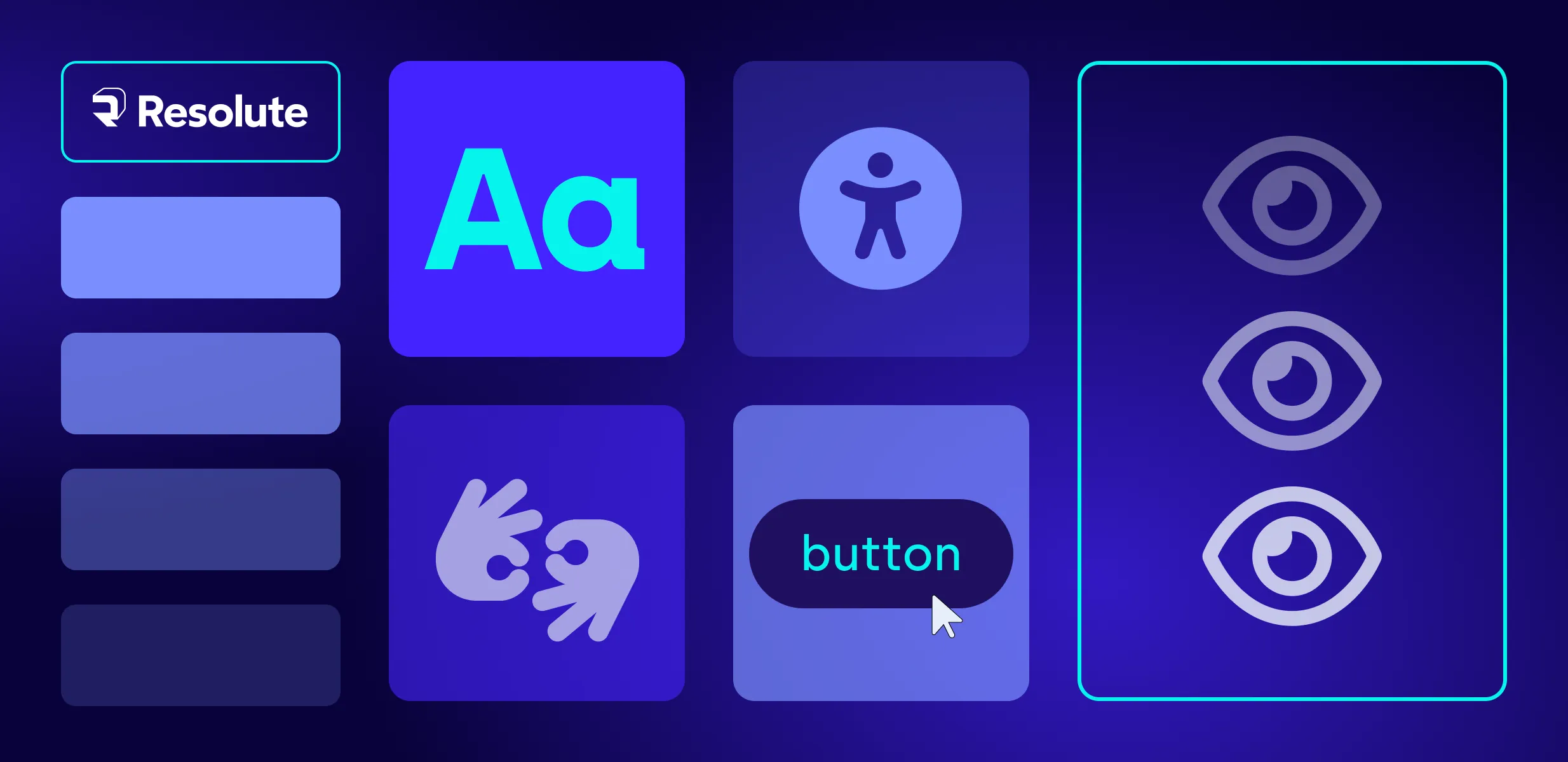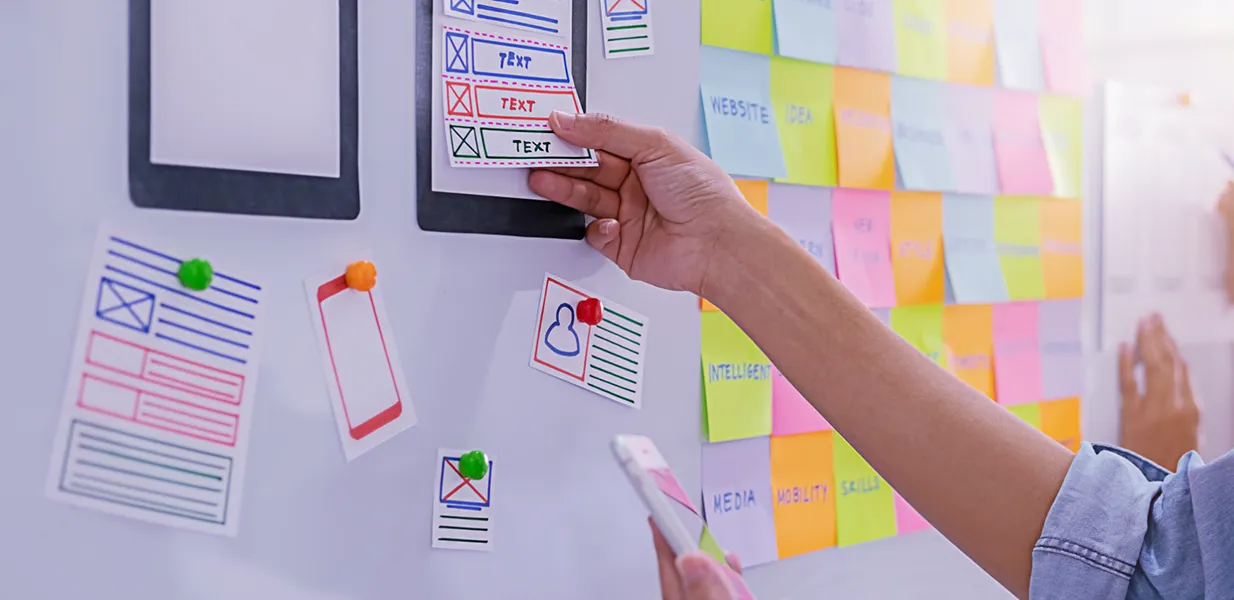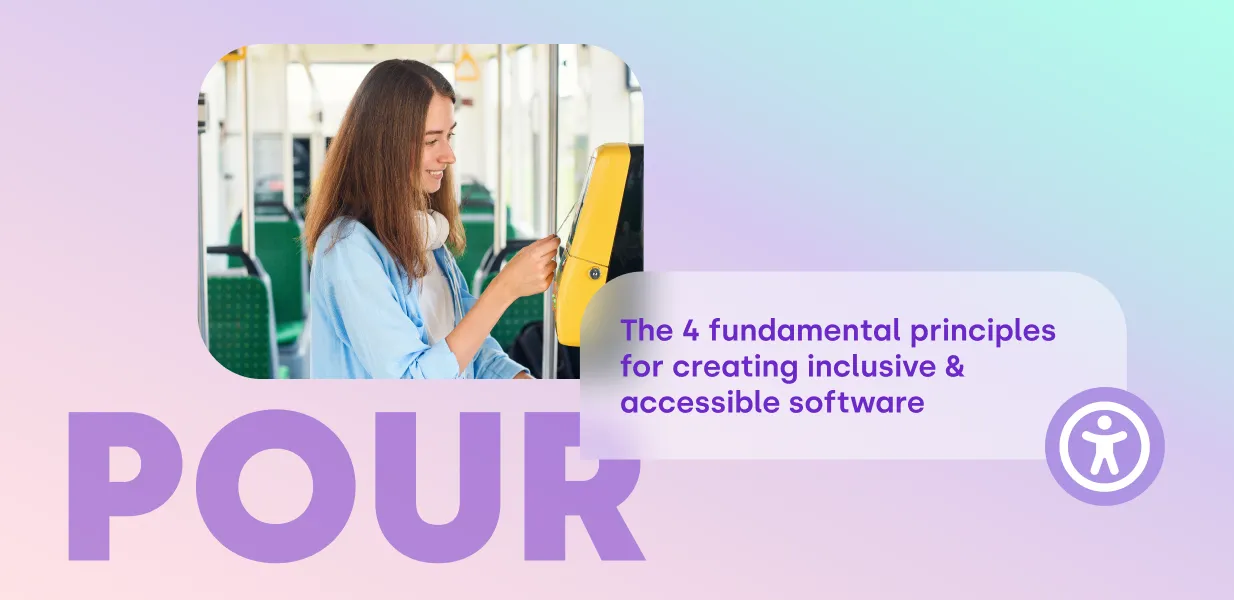
What is UX content strategy?

When talking about marketing, one of the first things you should include in the “to-do list” is preparing a content strategy. With the definition of the target persona, the market survey, channels, and tactics, you will surely reach the point of figuring out the right content to drive your target audience to profitable customer action.
But how does content interact with the user experience (UX), and should we think of the content when designing our UX project? The answer is they depend on each other, and since they interact with our target users through different mental channels, we should align them and take them into consideration.
How to define content strategy in UX?
Content strategy can have different levels and meanings, but when it comes to UX, it can be defined as the crossroad between what to say and how to do it in terms of usability. As an important part of the brand’s core strategy - content creation has to factor in target users, the user needs, what information is provided, and how easy it is for users to understand it. All these elements form the content strategy.
Content strategy means planning what content to create, what channels to use to deliver it, and how to govern its usage further, ensuring it gets to the right target audience.
In all UX design projects, content plays a vital role. Whether it is a textual and visual element on websites, drop-down menus, error messages, or the overall organization of the information, content strategy and UX design go hand in hand.
Even though the UX design proces might come first in the pipeline, it must always be placed in the frame of the core content strategy. Same as how poor quality content can jeopardize even the best design - good design touches can give an extra outshine to meaningful content. Thus, UX designers should have a good content strategy understanding, but also content strategists should be open to a dialogue.
What do UX content strategists do?
UX content strategists are the meeting point between the content creation process and the usability of the produced material. As outlined by one of the UX writing gurus Peter Morville - UX goes beyond usability and has 7 important elements. It has to be:
- useful
- usable
- desirable
- findable
- accessible
- credible
- and valuable.
Thus, having a dedicated UX content strategist is important. So, their role is to bridge the content strategy team with those running the UX project to showcase meaningful content, emphasized by the best design elements, following the logic of information architecture.
The main goal of the UX design is to satisfy customers’ needs, make the usage of the product easy and intuitive, and gain customer loyalty. Then comes the content that engages, entertains, and drives interest. UX content strategist is responsible for those two to be in perfect balance and continuously align with each other as an ongoing process.
How to create and implement a content strategy in UX?
Product definition
The UX team and content strategists brainstorm with stakeholders in the product definition process. Content strategists tend to look at the content lifecycle, and UX professionals focus on the UX user flow maps. At this stage, stakeholder interviews are conducted, and value proposition mapping and general concept sketching are done.
User research
UX research is the quantitative and qualitative study of the target audience and their requirements for a product that gives realistic contexts and insights, allowing professionals to shape the product over customers’ preferences.
It is a very important mixture of quantitative and qualitative methods because by learning more about users’ preferences, UX researchers and content strategists can create a product that is more aligned with customer needs and content workflow.
Market study
The market study includes competitor research, user research as well as processes of penetration. It helps UX designers understand industry standards and use them as an additional framework. In addition, it could put the product in the market context, what competitors do, and identify opportunities for the product.
Competitive analysis
Following the pure marketing logic of figuring out the competitive advantage over the similar products of others, you put the process within the frame of how users interact with the product, what are the key messages and how they serve the business objectives during the user journey.
Content audit
Information architecture organizes in one document content modeling, messaging architecture, the whole editorial strategy, and what content management system is planned to be used. The content audit evaluates if the workflow rightly explains the processes and has tools to measure the content quality.
Common methodologies in UX content strategy
When UX design teams work - they have to combine two types of methods to achieve consistent UX content strategy and usable content.
Mapping messages
As part of the information architecture, the structure can include different messages that afterward suit up with co-relations and context.
Creating user stories
Use cases or user stories help UX designers understand the usage of the product or service and its interaction with the intended audience. They can visually depict the story when delivering content or make the user identify with the hero in the story.
Storyboarding
Storyboarding is a tool UX designers use to determine the connection between user personas and user stories. A storyboard visually shows the path of a user interacting with your product.
During the design phase, UX designers are guided by the information architecture (IA) to build the actual user interface (UI) design. An effective design phase is highly collaborative and iterative. It can include the following steps:
-
Sketching
It is the easiest and fastest way to visualize ideas and shows the skeleton of the final product. You can sketch a drawing by hand on a piece of paper, on a whiteboard, or digitally - the tool is unimportant. The purpose of sketching is to help the design team visualize a wide range of design solutions before making the final decision.
-
Wireframes
This tool helps designers depict the whole logic of the page structure and the co-relations between menus and pages. It includes also the key elements and how they fit together. UX wireframing is the backbone of the product, and designers often use them as a foundation for mockups and prototypes.
-
Prototypes
This is a simulation of the product. It can include basic elements for general orientation, such as a clickable wireframe, or a more detailed product, such as a coded prototype.
-
Design specification
Those contain the visual design elements to be used to transform prototypes into working products.
-
Design systems
When projects are too large, designers typically create a system of components, patterns, and styles that help both designers and developers stay on the same track regarding the design.
Elements of UX content strategy
Usually, a good UX content strategy consists of four elements that successfully combine the structure-building process with the content definition. To create a content strategy as such, you surely will step on the market research findings and user surveys. You will need to factor in the brand voice and brand strategy and transform it by the guidelines of the user experiences of the user personas.
But how to do that? Here are the four elements usually defined to reach that goal.
Editorial strategy
It focuses primarily on the way textual and visual content is created. This is where content strategists ask important questions about the business goals, branding, and the voice and tone of any generated content. Part of this element is also the content evaluation and content lifecycle, working with existing content but also creating a new one in line with the brand voice.
It is important to note that defining content strategy involves close collaboration with content creators in any organization. But also involves the UX team that tries to catch the brain traffic and make the product’s structure focuses on the right element according to the UX research findings.
One way to effectively implement this strategy is to create a style guide that content creators and editors can follow to ensure effectiveness and consistency in all the content.
Experience design
This is an essential element of UX content strategy that shows on a practical level the interaction of our user personas with the product and sketches of the user journey maps. The brain traffic and user experiences of different audience groups are thoroughly analyzed, and their needs are identified and understood in a comprehensive manner.
For developing a comprehensive content strategy and usable content, user experience cannot be ignored, as this creates a firm structure for the content to be found, distributed, and perceived. Content strategists ensure that the entire experience of the target audience is given due attention and no touchpoint is overlooked.
Structure engineering
Designing a content management system that best fits the newly designed product is a complex task. How information is organized becomes critical to its success. Structure engineering explains the content’s structure logically, creating detailed page tables for better orientation of both UX writers and UX designers.
It defines how to reuse older content and how to make quick and easy updates based on feedback from users. In general, structure, and engineering gives the content an understandable organization that the users can easily interact with as it meets their needs and expectations.
Process design
It structures how the workflow of content creation and distribution in an organization goes. This can be understood as building a hierarchy in a content organization or information engineering. This includes process building, such as who creates the content, who edits it, and who approves the final version. All these questions help build a structured and optimized content management creation process. A well-defined process also ensures the delegation of responsibilities and clears the uncertainties regarding the question of authority and trust.
The first two elements, editorial strategy, and experience design deal with the design and presentation of the content itself. The last two elements, structure engineering, and process design refer to how content is created and how the entire workflow is developed.
The differences between UX writing and content strategy
To clarify the difference between UX writing and content strategy, maybe we should first define them through their purpose.
The core features of UX writing are workflow and governance. They directly impact the end content product and can act as UX advocates to the content creators. Basically, UX writing keeps designers in “the real world” when it comes to things like content requirements and template designs. In a nutshell, this tells us that the UX design process happens autonomously from those developing content strategies but still taking it into consideration can only improve the UX projects.
Natural flow is another inevitable element of the UX design, and a lack of quality content and consistency can significantly jeopardize the project.
Importance of UX content strategy
UX content strategy connects a business’s content efforts with business goals and user needs. It also bridges UX design, editorial strategy, content engineering, workflow, and governance. Those seemingly different areas get combined under one head - UX content strategy - securing the smooth and easy-to-navigate final product.
An experienced guide can save you a lot of time and problems. Contact us and find out more about similar projects we have realized. We will be happy to dive deep into your project and help you reach its best outcome.
Frequently Asked Questions
Content strategy in user experience focuses on the creation and helpful governance of meaningful UX content. Content strategy in UX ensures that content can reach the user in the right format at the best location and time. It ensures the final product is compatible with visuals and branding, is accessible and useful, and can support business goals.
The content strategy combines the steps of the research and development stage. In contrast, content design already uses the insights gathered in the research stage to meet users’ needs and business goals best.
The three inevitable elements of a UX strategy are usability and being useful in general, enjoyability, and accessibility.
UX content is the mixture between the written text and its presentation to the user, put in the framework of the brand guidelines, business goals, and user needs.






